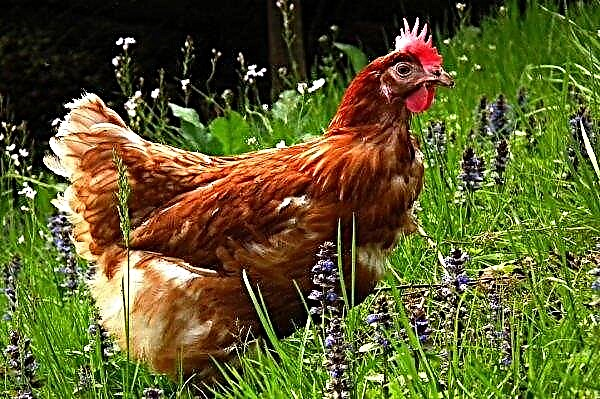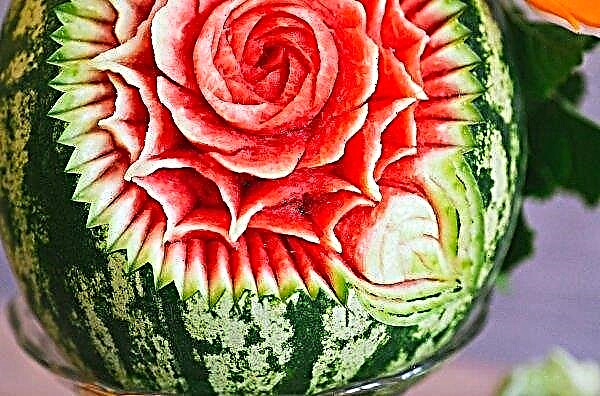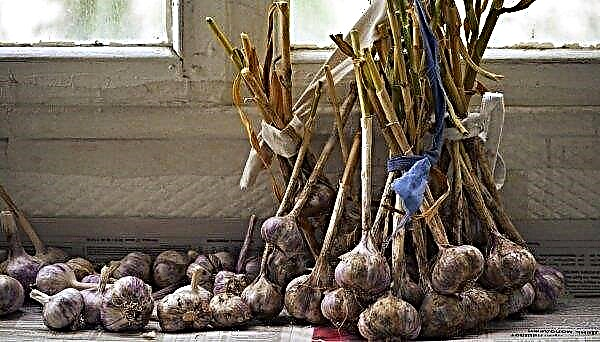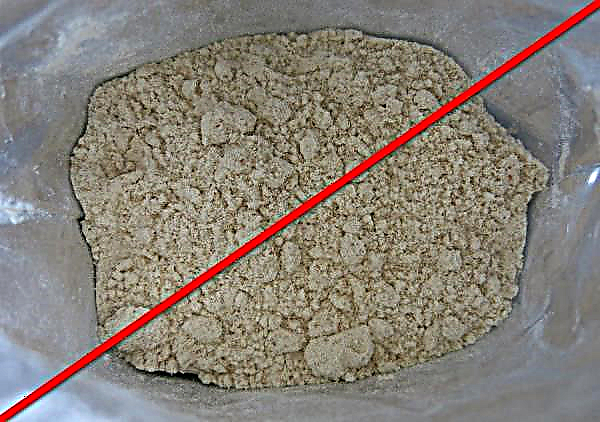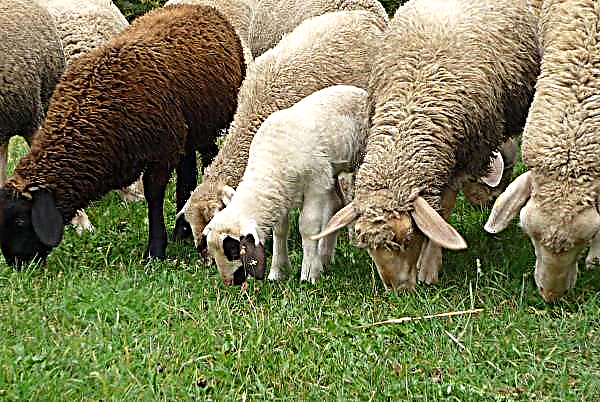Man began to raise sheep many hundreds of years ago, and today sheep farming is one of the most common types of farming, providing people with the need for meat, wool and milk. But modern domestic sheep were obtained as a result of the domestication of wild species of these artiodactyls, which still live on the planet in natural habitat. More details about the history of domestication of sheep, as well as a description of the alleged wild ancestors of these animals and the main theories of their origin are described later in the article.
History of Domestication
Sheep belong to one of the oldest animals that have been domesticated by humans. They were bred in the Neolithic era about 8-12 thousand years ago, and in ancient Egypt, domestic sheep were known 3000 years BC. e., as evidenced by the images found on the walls of the grave monuments of the dynasties of the pharaohs. Babylonian priests used sheep in rituals of sacrifice to the gods in 2000 BC. e., and for 1300 years BC. e. world-famous fabrics and shawls were made from animal hair.
Did you know? China is the leader in domestic sheep breeding - more than 144 million of these animals are raised here annually.
Ancient sheep had a short tail, and a long-tailed variety was obtained in Persia, Syria and Armenia. The first mention of this is contained in the writings of Herodotus and Aristotle, written 300-400 years BC. e., and the resulting variety of animals in external characteristics resembled modern Qigai sheep. Later they came to the territory of Europe, Asia and Africa, where they became the ancestors for modern breeds.
Subspecies with thin and long white hair are widespread in Greece, Spain and Italy, and modern merino breeds have already been obtained from them.In Europe, farmers initially engaged in sheep farming only with the goal of obtaining coarse sheepskin and meat. But in the VIII-IX centuries, there were enterprises for the production of sheep cloth in the territory of Flanders and Friesland, and at the beginning of the XII century animals began to be bred in England in large numbers, refusing to use the wool of Spanish sheep.
From the 19th century, English and French farmers began to improve the productivity and characteristics of coarse-haired sheep, having received many new breeds that are known today.
Origin of domestic sheep, their ancestors
The first breeds of domestic sheep were obtained from wild species of animals, but they still have not been able to accurately determine their ancestor. There are many wild breeds of sheep that are similar to their home relatives in appearance and productivity, but most often the ancestors of modern cultural varieties are called mouflons, argali and argali. More details about each of the listed species - later in the article.
Wild mouflon
This animal species includes two subspecies - European mouflon and Asian wild mouflon (arkala).
Important! Mouflon wool is highly valued, and their powerful curved horns have become a desirable trophy for many hunters, so some species of these animals are on the verge of extinction.
Brief description of animals:
- The body of the mouflon reaches a height of 90–95 cm, and its length is 131–150 cm.
- Outside, the massive trunk of the sheep is covered with short hair, which changes color depending on the season - in summer it has a red tone, and by the onset of cold weather it becomes darker.
- A characteristic feature of mouflons is a long black stripe running along the back. The lower body, hooves and nose of animals are fawn.
- A sexually mature male reaches 50–80 kg, whose body weight depends on the size of the horns. Females are much lighter - from 30 to 45 kg.
- The head of adult rams is decorated with large horns, twisted back or to the sides. The diameter of the base of the bone formations can reach 30 cm, and with each year of the life of a ram, one ring-shaped growth is formed on them. Sheep are hornless or have small horns.
- The reproductive age of females begins at 2 years. In one pregnancy, which lasts 5 months, a sheep can reproduce 1-2 lambs.
- The life expectancy of animals is about 15 years.

Argar
This species of wild sheep was actively exterminated by hunters; therefore, it is listed in the Red Book. Arkhars are the largest variety of mountain sheep, have an attractive exterior, proud posture and massive horns.
A brief description of argali is presented below:
- The height of adult individuals is 95–125 cm, and the body length reaches 1.2–2 m. Females are smaller than males.
- Animals are characterized by a slender body that looks shortened, and a wide, developed chest. The coat is sandy yellow or brown, and in winter it darkens.
- There is a white spot on the loins of all adults. The belly, muzzle and inside of the hips are also white.
- The mass of a ram depends on the size of the horns and is 110–170 kg, but can reach 200 kg. Females gain a mass of 60–100 kg.
- The rams have large, spiral-shaped horns, the length of which can be 2 m, and weight - up to 0.50 c. In females, the horns are sickle-shaped and slightly bent backward, and their total length is from 5 to 60 cm. Hornless representatives of the species are sometimes found.
- Argon females enter the stage of puberty at the age of 2-3 years, and males at 4-5 years. Pregnancy lasts for 150–160 days, and each sheep reproduces 1 lamb weighing up to 4 kg.
- The average life expectancy of argali in its natural habitat is 10–13 years, and in zoos they can live up to 18 years.

Argali
The second name of these animals is Altai mountain sheep. They are one of the subspecies of argali and have very heavy horns, which have a beautiful shape and massive size.
A brief description of argali is presented below:
- The height of the individual at the withers is 70–125 cm with a trunk length of about 1.2–2 m, and the males are larger in comparison with the females.
- The argali body is squat and is located on thin limbs with great strength. Animal hair can have a different color, which varies from light yellow to dark brown.
- On the sides of the body of the animal are long stripes of brownish hue, which visually separate the upper part of the body from the bottom. The muzzle and belly are painted in lighter colors than the back, and on the neck of the males there is a ring of light wool.
- The mass of an adult argali ram can reach 180-200 kg, and females gain weight from 70 to 100 kg.
- The horns of animals are bent back and twisted in a spiral shape, and their length can reach 151 cm with a maximum diameter of 55 cm at the base. The mass of horns of ram argali can reach 25–35 kg. Females have smaller horns.
- Argali reach puberty at the age of 2 years, but males begin to breed actively only after they reach 5 years of age. For one pregnancy lasting 5 months, the female reproduces 1-2 cubs.
- Animals live for about 12-18 years.

Wild Ancestral Habitat
All of the listed wild ancestors of domestic sheep live in mountainous areas. At the same time, in the winter they often descend into the valleys and at the foot of the mountains, and spend the summer on the slopes, feeding on the vegetation growing there.
The habitat of these animals is described below:
- mouflon is distributed mainly in the mountains on the shores of the Mediterranean Sea - in Corsica, Sardinia and Cyprus, as well as in Iraq and Armenia;
- argali live in Central Asia, are found on the territory of Kazakhstan and Mongolia, and also live in the foothills of the Himalayas, Nepal, Tibet, Palmyra and the Tien Shan Range;
- Argali can be found in the range of mountain ranges and ranges of Southeast Altai, East Kazakhstan, Mongolia and Southwest Tuva.
Important! As a result of experiments on crossing representatives of wild breeds with domestic varieties of sheep, healthy and viable offspring were obtained, which confirms the high likelihood of kinship between animals.
Theories of origin
Due to the fact that it has not yet been possible to unambiguously establish the true ancestor of all domestic sheep, there are two main theories of the origin of these animals. None of them can be recognized as true or false, since domestic sheep are outwardly similar to the supposed wild ancestors, but differ from them in their body structure and some other signs.
A brief description of the main theories of the origin of domestic sheep is presented below:
- monophyletic theory claims that all breeds of domestic sheep originated from the same ancestor - wild mouflon, and all differences in the physique and appearance of the coat are the result of breeding work, and are also associated with a partial change in the habitat of domestic sheep;
- polyphilitic theory contains the assumption that domestic sheep came from several different species of wild animals, namely argali and argali, due to which modern breeds of domestic sheep differ from each other in appearance and productive qualities.
Did you know? Long and strong argali hooves help them easily move along mountainous slopes and run fast, reaching speeds of up to 60 km / h.
Adherents of various theories disagree about the exact origin of domestic sheep. Representatives of modern cultural breeds of these animals have much in common with their wild counterparts, but surpass them in terms of productivity and quality of wool. This result was obtained as a result of many years of selection by scientists from different countries.

